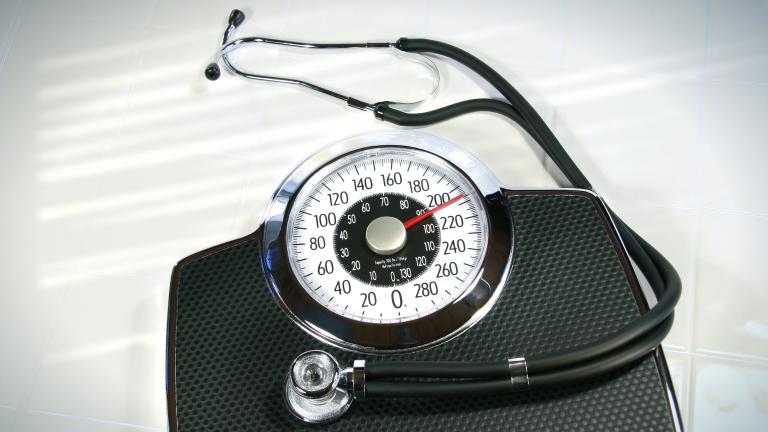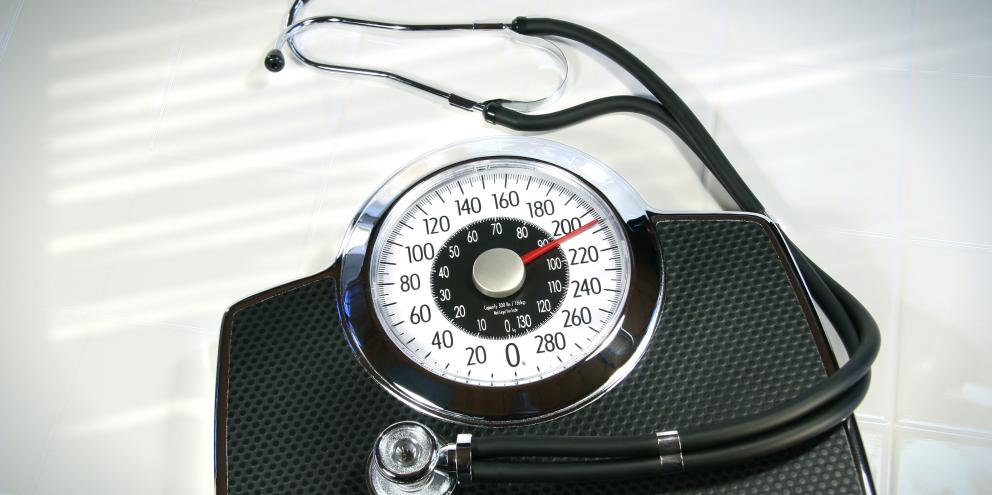
The number of surgical patients with obesity has steadily increased across the world over the past three decades, with greater than 20% of adults in industrialized nations, and in excess of 30% in the United States, now classified as obese1,2. This epidemic has created numerous challenges in the operating room and beyond1,2. While the implementation of lung protective ventilation strategies for these patients has become widespread in the Intensive Care Unit (ICU), the use of lung protective ventilation, including low tidal volumes and positive end-expiratory pressure (PEEP), has not seen widespread adoption in the operating room2.
In this article, we’ll take a look at the challenges with ventilating obese patients during surgery. We’ll also lay out the lung protective strategies to be considered, as well as the possible outcomes that may be achieved through their use based on current clinical evidence.
Ventilation challenges due to obesity
Obesity poses a very particular set of challenges in the surgical setting. Obese patients present with restricted lung mechanics due to excessive adiposity, as well as frequent respiratory comorbidities1,2. Respiratory comorbidities that may play a role include airway hyper-reactivity, sleep apnea (SA), asthma, obesity hypoventilation syndrome (OHS) and pulmonary hypertension2.
Additionally, obesity results in1,2:
- Reduced lung capacity, primary due to diminished functional residual capacity (FRC) and expiratory reserve volume (ERV)
- Increased ventilation-perfusion mismatch
- Increased chest wall resistance
- Reduced respiratory system compliance
- Higher intra-abdominal pressure
Because of this, obese patients are at higher risk for hypoxemia, both during and after surgery, and the formation of atelectasis1. Care for the obese patient is further complicated by the fact that decreased pulmonary compliance during anesthesia results in an increase in trans-pulmonary pressure. This increased pressure can not only lead to hemodynamic compromise, but can also increase the rate of postoperative pulmonary complications (PPCs) if prolonged1,3. This can leave obese patients at risk for increased morbidity, longer length of stay (LOS) and higher mortality (with one in five patients who develop a PPC dying within 30 days of surgery)4.
Lung protective strategies to consider
Fortunately, growing evidence suggests that the use of intraoperative lung-protective mechanical ventilation, including low tidal volumes, moderate to high levels of PEEP and recruitment maneuvers may be the answer to overcoming the surgical challenges posed by obese pateints1,4.
Let’s take a look at why this is becoming the preferred approach for obese surgical patients.
As Reinius et al report in “Prevention of Atelectasis in Morbidly Obese Patients during General Anesthesia and Paralysis”, while high tidal volumes are often used in obese patients, these increases do not improve oxygenation. This suggests that a lower tidal volume with the addition of recruitment maneuvers, followed by PEEP, could be the best strategy to improve oxygenation5.
This conclusion is supported by Fernandez-Bustamante et al. The authors state that due to the fact that obese patients are particularly prone to the development of atelectasis, recruitment maneuvers, plus the application of PEEP, serve as a vital strategy to improve oxygenation and lung mechanics2.
In “How can I manage anaesthesia in obese patients,” De Jong et al also suggest that obese patients are more sensitive to atelectasis and, therefore, to the absence of PEEP. This means that the application of PEEP can be used to improve gas exchange, respiratory mechanics and alveolar recruitment in obese patients1.
Finally, Imber et al highlight the importance of combining the benefits of recruitment maneuvers in conjunction with PEEP6. Their paper, “Respiratory Management of Perioperative Obese Patients,” concludes that although a recruitment maneuver without subsequent PEEP results in recruitment of atelectatic portions of the obese lung, these results are only temporary. Neglecting to utilize PEEP (or the use of inadequate or low levels of PEEP), leads to a subsequent return to applied end-expiratory pressure that is lower than the closing pressures of the recruited alveoli. This results in “de-recruitment” and the reformation of atelectasis.
Therefore, the authors conclude that the application of adequate PEEP after recruitment maneuver is necessary to maintain a positive end-expiratory trans-pulmonary pressure in the obese patient.
Outcome studies reveal the value of intraoperative lung protective ventilation in obese patients
Let’s delve into the positive outcomes that may be expected from the use of these strategies based on current clinical evidence.
Reduced complications and LOS, plus increased lung compliance
A meta-analysis by Aldenkortt et al found benefits from adding recruitment maneuvers to PEEP in obese patients8. Their work demonstrated that the combination not only increased oxygenation, but also improved lung compliance, without increasing the risk of hypotension from decreased preload. The authors concluded that use of protective ventilation could potentially prevent the development of ventilator-induced lung injury through the stabilization of alveoli.
The multi-center, randomized, double-blind IMPROVE study compared the use of “optimized” or “protective” ventilation, which included tidal volume of 6 – 8 ml/kg IBW, PEEP 6 – 8 cmH2O, and systemic alveolar recruitment maneuver every 30 minutes, to non-protective ventilation1. The findings showed that protective ventilation resulted in reduced overall postoperative pulmonary complication rates (10.5% compared to 27.5% for non-protective ventilation), and also lowered the average LOS by two days.
While the study was performed in non-obese patients, De Jong et al suggest that the results are generalizable to the obese patient1.
Reduction of lung atlectasis
In addition to confirming the above findings that a combination of recruitment maneuvers and PEEP may improve oxygenation, a study by Talab et al also found that in obese patients, the use of these lung-protective strategies reduced lung atelctasis2.
Another study of morbidly obese patients comparing three different ventilator strategies (recruitment maneuver only, PEEP only or recruitment maneuver plus PEEP) confirmed this finding5. Reinius et al state that following induction of anesthesia, atelectasis increased from 1 ± 0.5% to 11 ± 6% of total lung volume. Only the combination of recruitment maneuver plus PEEP resulted in reduced atelectasis
(3 ± 4%). The combination also increased oxygenation, while PEEP alone resulted in neither benefit and recruitment maneuver alone offered only transient improvement in respiratory function.5
Nestler et al also investigated the issue of atelectasis due to general anesthesia in obese patients in “Individualized positive end-expiratory pressure in obese patients during general anaesthesia: a randomized controlled clinical trial using electrical impedance tomography7.”
Patients undergoing elective laparoscopic surgery were randomly allocated to mechanical ventilation with a tidal volume and either 1.) a recruitment maneuver followed by individualized PEEP titrated using electrical impedance tomography or 2.) no recruitment maneuver and PEEP of 5 cmH2O. The results showed that for obese patient, a recruitment maneuver and higher PEEP restored end-expiratory lung volume, regional ventilation distribution and oxygenation7.
Summary
- There are more obese patients undergoing surgery than ever before, who face a higher risk of postoperative pulmonary complications
- Obesity poses numerous challenges to optimizing ventilation during anesthesia
- Implementing lung protective ventilation strategies for obese patients is vital to improve safety during and after surgery
- Recruitment maneuvers followed by maintenance of PEEP intraoperatively may reduce atelectasis, complications and LOS, while improving oxygenation and lung compliance
References
1: De Jong, Audrey et al. “How can I manage anaesthesia in obese patients?” Anaesthesia Critical Care & Pain Medicine, Volume 39, Issue 2, 2020, Pages 229-238, ISSN 2352-5568, https://doi.org/10.1016/j.accpm.2019.12.009.
2: Fernandez-Bustamante A et al. “Perioperative lung protective ventilation in obese patients.” BMC Anesthesiol. 2015 May 6;15:56. doi: 10.1186/s12871-015-0032-x. PMID: 25907273; PMCID: PMC4491899.
3: Zhu et al. “Effects of intraoperative individualized PEEP on postoperative atelectasis in obese patients: study protocol for a prospective randomized controlled trial.” Trials. 2020, 21:618.
4: Güldner A et al. “ Intraoperative protective mechanical ventilation for prevention of postoperative pulmonary complications: a comprehensive review of the role of tidal volume, positive end-expiratory pressure, and lung recruitment maneuvers.” Anesthesiology. 2015 Sep; 123(3):692-713. doi: 10.1097/ALN.0000000000000754. PMID: 26120769.
5: Reinius H et al. “Prevention of atelectasis in morbidly obese patients during general anesthesia and paralysis: a computerized tomography study.” Anesthesiology. 2009 Nov; 111(5):979-87. doi: 10.1097/ALN.0b013e3181b87edb. PMID: 19809292.
6: Imber DA et al. “Respiratory Management of Perioperative Obese Patients.” Respir Care. 2016 Dec; 61(12):1681-1692. doi: 10.4187/respcare.04732. Epub 2016 Sep 13. PMID: 27624632.
7: Nestler C et al. “Individualized positive end-expiratory pressure in obese patients during general anaesthesia: a randomized controlled clinical trial using electrical impedance tomography.” Br J Anaesth. 2017 Dec 1; 119(6): 1194-1205. doi: 10.1093/bja/aex192. PMID: 29045567.
8. M. Aldenkortt, C. Lysakowski, N. Elia, L. Brochard, M. R. Tramèr, “Ventilation strategies in obese patients undergoing surgery: a quantitative systematic review and meta-analysis”. British Journal of Anaesthesia. 2012 Oct; 109:493–502. https://doi.org/10.1093/bja/aes338
© General Electric Company, 2022 – All rights reserved.
GE, CARESCAPE and the GE Monogram are trademarks of General Electric Company. Reproduction in any form is forbidden without prior written permission from GE. Nothing in this material should be used to diagnose or treat any disease or condition. Readers must consult a healthcare professional.
JB20681XX








